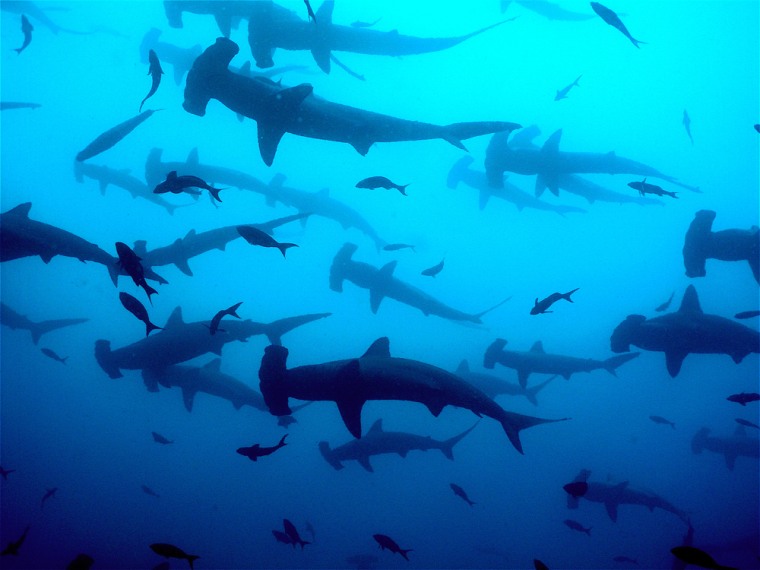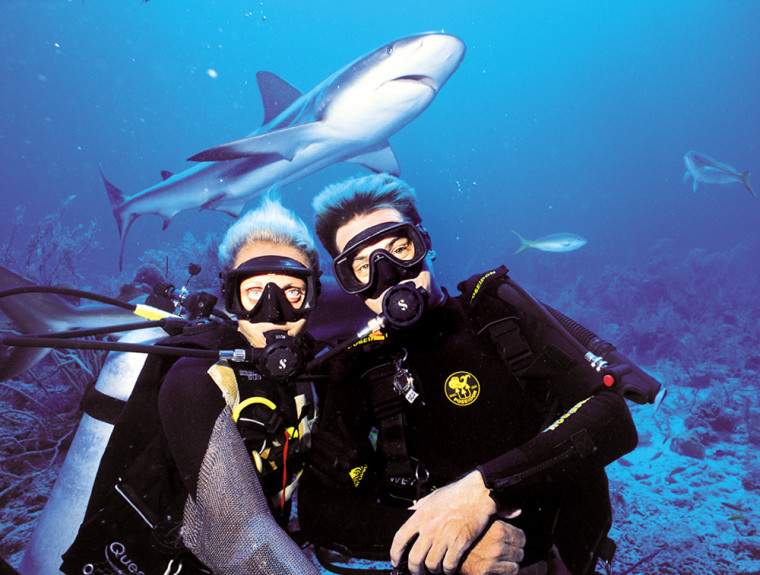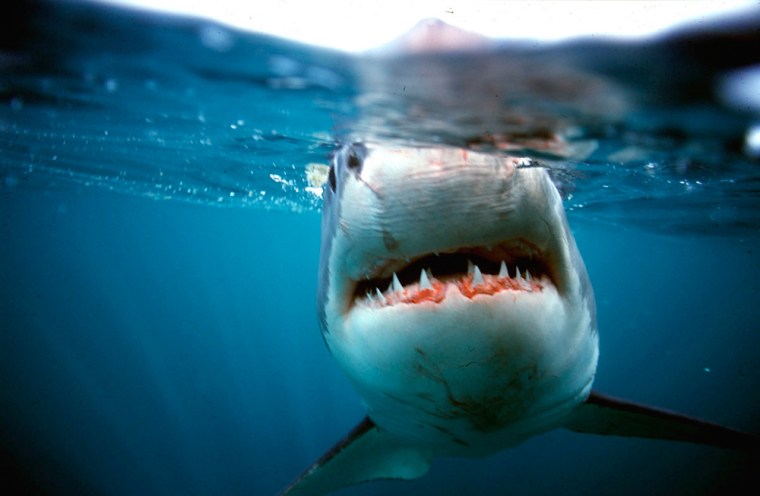You don’t have to be Jacques Cousteau to go scuba-diving in shark-infested waters.
Just ask his son, fellow sea-explorer Jean-Michel Cousteau: “I took the Duchess of York, who was afraid of water,” he says. “In three days, this incredible lady learned to scuba dive, put a chain-mail suit on, and went and fed sharks in the Bahamas.”
She’s not alone. Not by a long shot. “If somebody said twenty years ago the hottest thing in scuba diving was going to be shark diving, it would have been quite amazing,” says National Geographic underwater photographer David Doubilet. “It used to be very hard to get shots of sharks.”
Today, there are scores of jaw-dropping shark-sighting hotspots in the Bahamas and beyond, with guided tours ranging from simple, inexpensive snorkeling trips off the coast of Mexico to swanky seven-day yacht-propelled scuba excursions in the Galapagos Islands.
Sinking our teeth into this adventurous trend, we’ve assembled a panel of noted shark experts to compile a list of the world’s scariest shark dives.
Bring your best waterproof camera. And try to remember to use it.
“I took away my camera because I just couldn't believe the size,” says five-foot-five former model turned underwater photographer Caterina Gennaro about her first up-close encounter with an approximately 21-foot-long great white shark. “It didn’t look real. It looked prehistoric, like a dinosaur,” she says. “People think great whites are scary looking, but when you watch them under water it’s amazing — they’re the most stunning animals.”
Thrill-seekers in search of the ocean’s legendary apex predator typically flock to three noted great white hunting areas: First and most notoriously named is a place called Dangerous Reef in the Neptune Islands off the southern coast of Australia, where famed shark-attack survivor Rodney Fox has been leading cage-diving expeditions for more than three decades.
Second is so-called Shark Alley near the Dyer Islands off the southern coast of South Africa, where boatloads of shark seekers from neighboring Gansbaai come to get chummy with the native great whites.
Third and by far tops in the Western Hemisphere is Guadelupe Island off the coast of Mexico.
When dealing with the mythologized man-eater that inspired "Jaws", most operators put divers in protective steel cages. But not always. “I never ever use a cage for diving with sharks,” says South African tour guide Mark Addison.

“The conditions have to be perfect,” notes Cousteau. “The water has to be very relatively clear. You don’t want anybody fishing. No blood in the water.”
Is it truly safe to go into the water? “Accidents,” as many experts put it, are rare. “You are more likely to be killed by a falling Coca-Cola machine than a shark bite,” says longtime shark researcher Dr. Samuel Gruber of the Bimini Biological Field Station in the Bahamas.
According to Erich Ritter of the Global Shark Attack File, none of the more than 130 reported shark attacks worldwide since 2006 have involved divers on a guided tour.

But accidents can happen. In 2004, renowned South African shark-diving operator Andre Hartman was bitten on the foot while reportedly and ill-advisedly hanging over the side of a boat as he lured great whites with bait—an incident which drew immediate scrutiny by coastal regulators.
Some experts actually recommend tour operators with prior bad-encounter experience, such as Fox or Hartman. “They do a fabulous job,” says Cousteau, “because they know what not to do.”
Of course, not all shark tours present the same level of danger. There’s no need for cages when splashing around with the world’s largest shark species, the filter-feeding whale shark—a big draw for scuba divers and snorkelers in places such as Western Australia’s Ningaloo Reef and Mexico’s Holbox Island. “Just don't make the sound of wounded plankton while you're swimming with the big boys,” quips Dr. Robert Heuter, director of Florida’s Center for Shark Research. But while this gentle giant has no interest in devouring you, there's always the risk an inattentive diver will get sideswiped by its whale of a tail.
Some tours are more challenging than others, recommended for intermediate to advanced divers only. (Some also require divers to provide their own equipment.) Less experienced divers might be better served by snorkel trips or surface-level cage-dives fed with hookah-style air-supply lines.
Naturally, shark populations in any given area are susceptible to seasonal changes, weather conditions, and, perhaps most importantly, fishing. Poachers are notorious for hunting sharks for their fins, considered a delicacy in some parts of Asia, a practice that has decimated the shark populations in some areas.
Preservationists suggest that shark tourism may be part of the solution. “If you kill a shark, you might get a few hundred dollars for the fin,” says Dr. Gruber. “But that same shark is worth hundreds of thousands of dollars in the water at one of these shark dives.”
